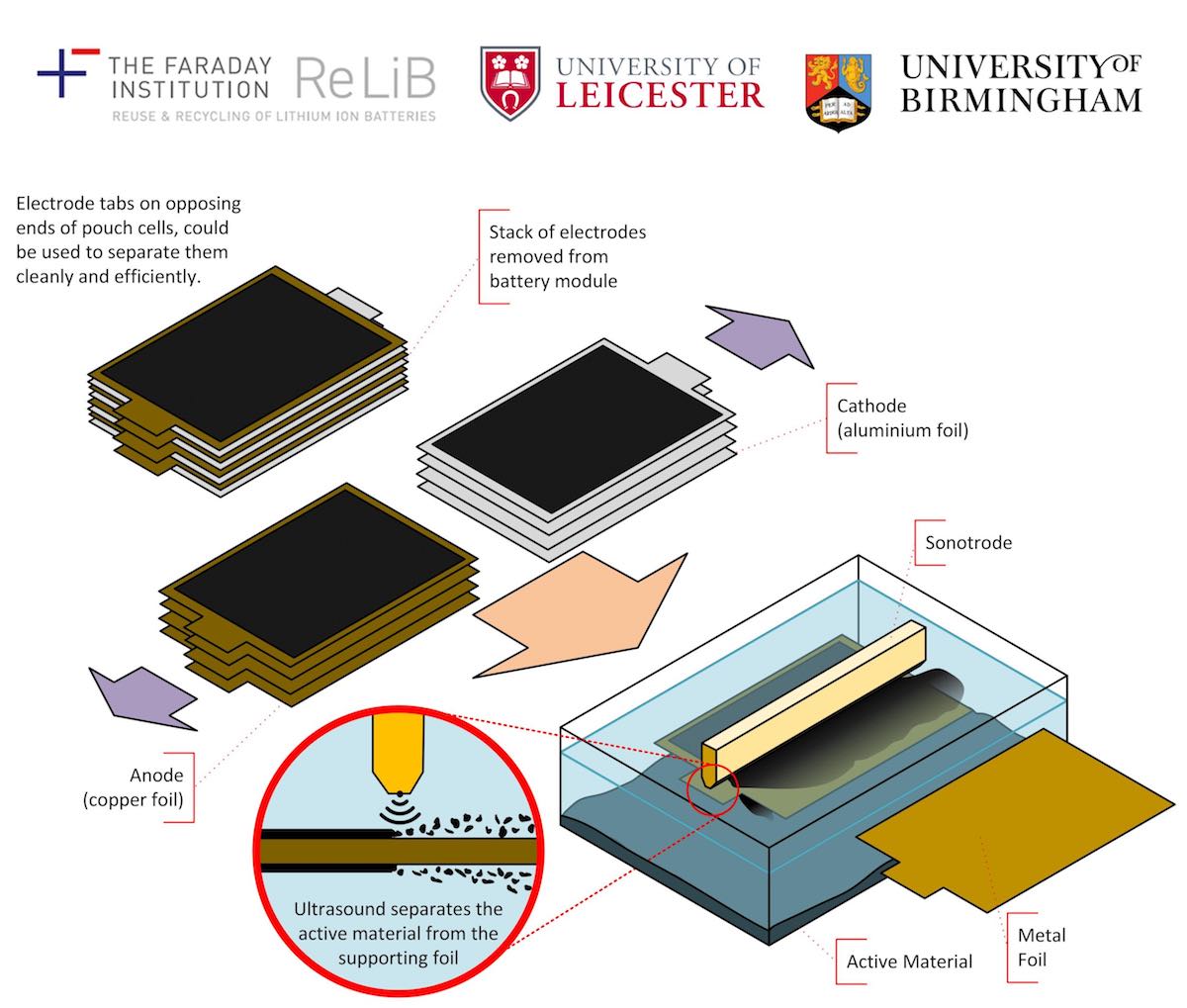
Ultrasonic delamination technique to return high purity materials to the manufacture of new batteries.
Researchers working on the Faraday Institution project on recycling lithium-ion batteries (ReLiB) at the Universities of Leicester and Birmingham have solved a critical challenge in recovering the materials used in electric vehicle batteries by end of its useful life, allowing its reuse in the manufacture of new batteries.
The new method, which uses ultrasonic waves to separate the valuable material from the electrodes, is 100 times faster, more environmentally friendly and leads to higher purity of the recovered materials relative to current separation methods.
To ensure that the environmental and economic benefits of electric vehicle batteries are realized, researchers at the Faraday Institute have focused on the life cycle of batteries, from their first production to their reuse in secondary applications and subsequent recycling. . A key stumbling block has been material separation, i.e. how to extract and separate critical materials – such as lithium, nickel, manganese and cobalt – from used batteries quickly, cheaply and in an environmentally friendly way.
The ReLiB team in Leicester and Birmingham devised a novel ultrasonic delamination technique that removes the active materials from the electrodes leaving the aluminum or copper virgin. This process was very effective in removing graphite and lithium, manganese and cobalt oxides, commonly known as NMC.
Materials recovered using this technique are of higher purity, and thus higher value, than those recovered using conventional recycling methods and are potentially easier to use in the fabrication of new electrodes. The method is fast and adapts technology widely used in the food preparation industry.
Current delamination recycling techniques use concentrated acids in a batch immersion process. The new ultrasonic technique is a continuous feed process that uses water or diluted acids as a solvent, making the technique more environmentally friendly and less expensive to operate. It can delaminate 100 times more electrode material in a given time and volume than existing batch delamination techniques.
The researchers are in early talks with a number of battery manufacturers and recycling companies for testing of the technology at an industrial hub in 2021. The research team from the Universities of Leicester and Birmingham have tested the technology on four major battery types. common and has found that it works with the same efficiency in all cases.
More information: pubs.rsc.org